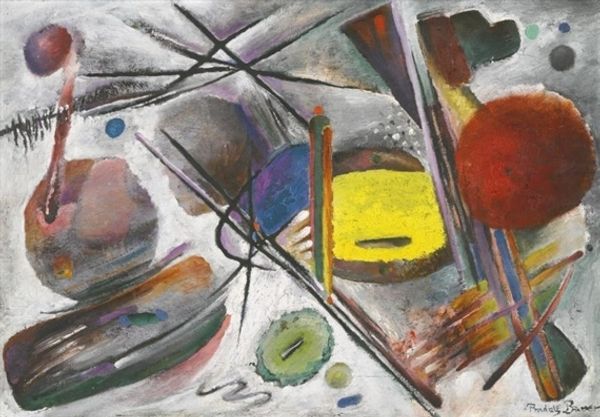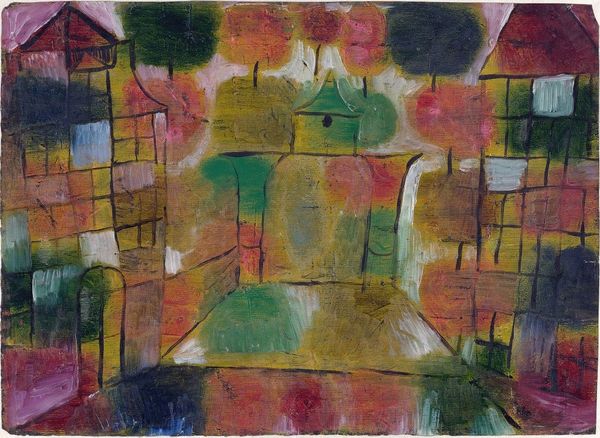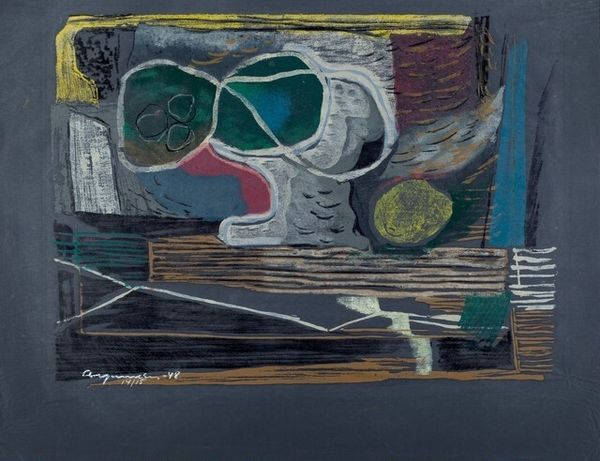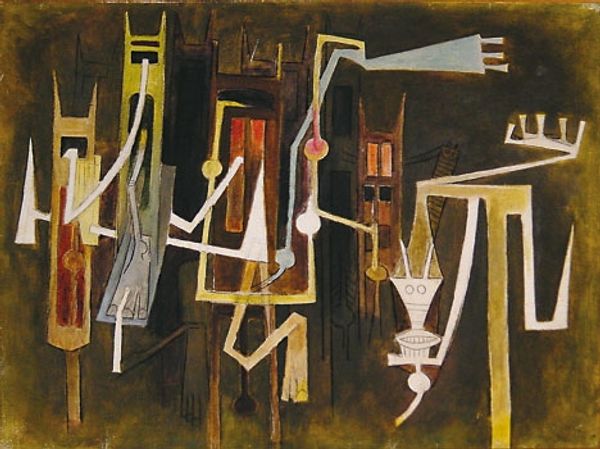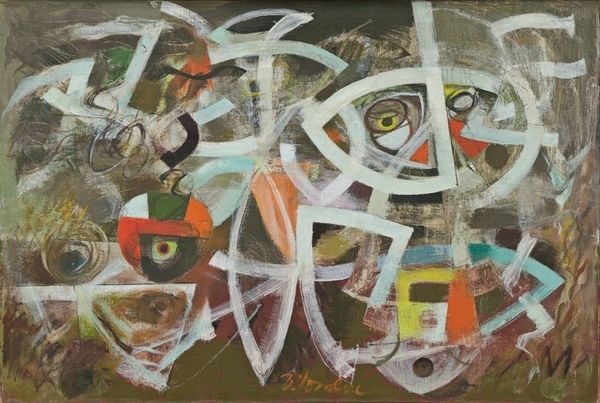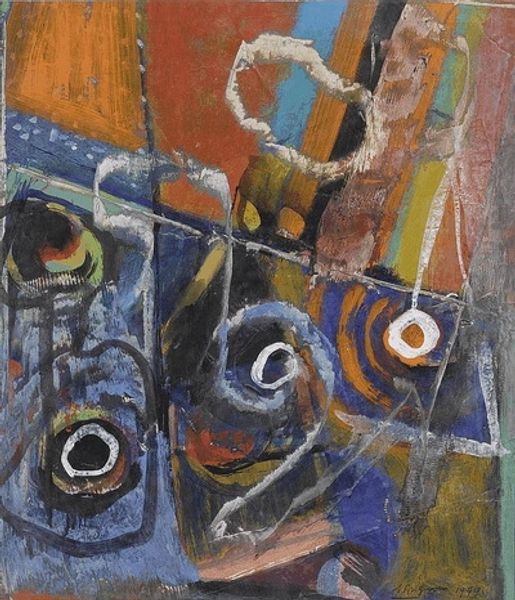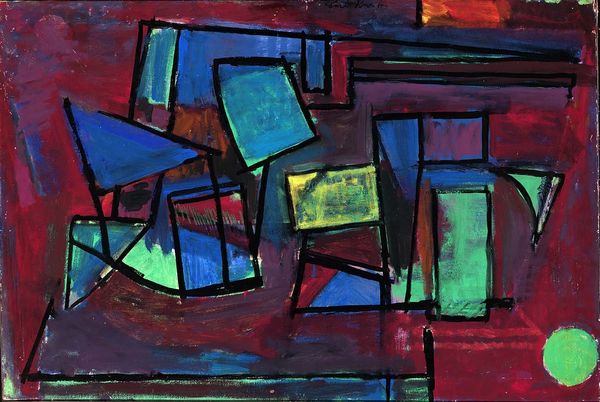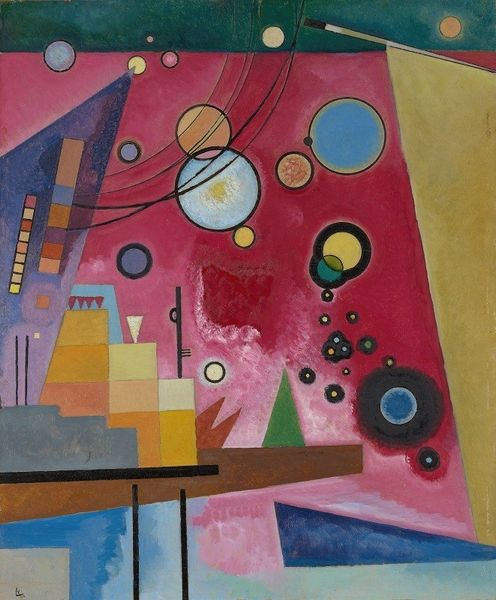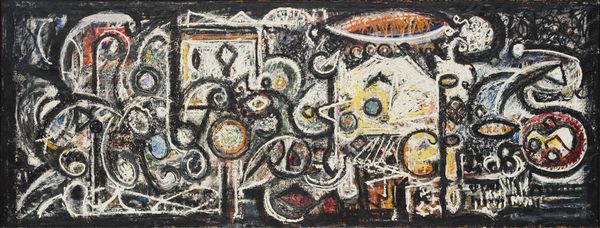
mixed-media, painting, oil-paint
#
abstract-expressionism
#
mixed-media
#
abstract painting
#
non-objective-art
#
painting
#
oil-paint
#
form
#
geometric-abstraction
#
modernism
Dimensions: 45.6 x 61 cm
Copyright: William Baziotes,Fair Use
Editor: We’re looking at "The Room," a mixed-media piece from 1945 by William Baziotes. It strikes me as a playful exploration of geometric shapes, almost architectural in its fragmented structure. How do you interpret this work? Curator: What's fascinating is Baziotes’ creation of a domestic space using abstraction. The painting emerged from the wartime period when the idea of 'home' was heavily charged with anxiety. Do you notice the somewhat unstable equilibrium among forms? How shapes lean against each other, creating visual tension, but also a strange harmony? Editor: I see what you mean. The lines are clean, but the shapes within seem like they’re almost floating. The limited color palette of blues, whites, and reds also lends it a slightly melancholic atmosphere, given the historical context. Were artists using abstraction to represent psychological states at this time? Curator: Absolutely. Abstract Expressionism was deeply rooted in the attempt to visualize internal emotions, trauma, and anxieties experienced during and after the war. Artists were grappling with feelings too complex for figurative representation. Non-objective art became a powerful language to reflect instability on a more personal, intimate level. What's your takeaway after considering that historical layer? Editor: It gives the painting so much more weight. I initially saw a simple, almost whimsical composition, but knowing the socio-political influences helps me understand its deeper emotional resonance. Curator: Precisely. Baziotes uses this abstraction to subtly communicate an individual’s internal state within a larger narrative of the 1940's. A room, therefore, becomes more than a physical space. Editor: Thanks! Now I know how much context shapes our viewing experience!
Comments
No comments
Be the first to comment and join the conversation on the ultimate creative platform.

